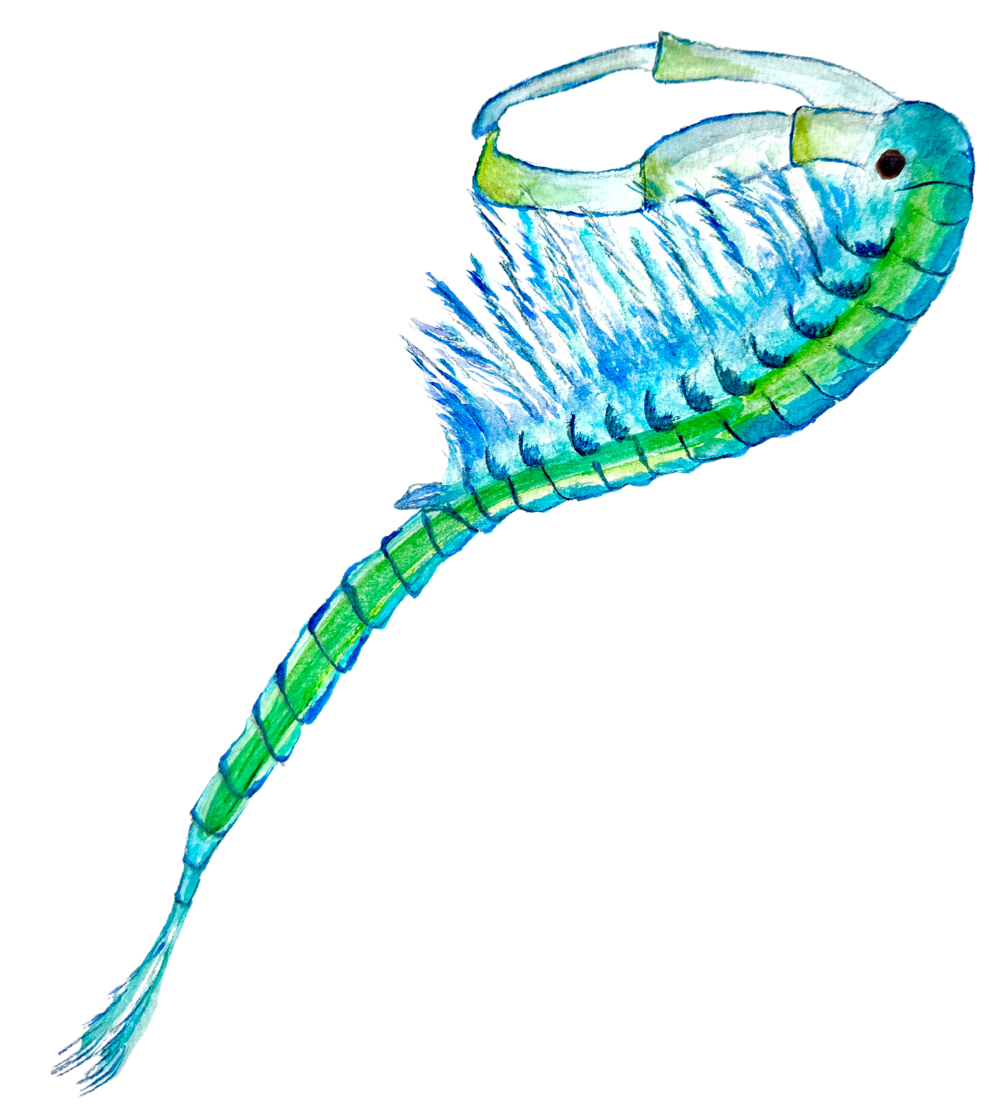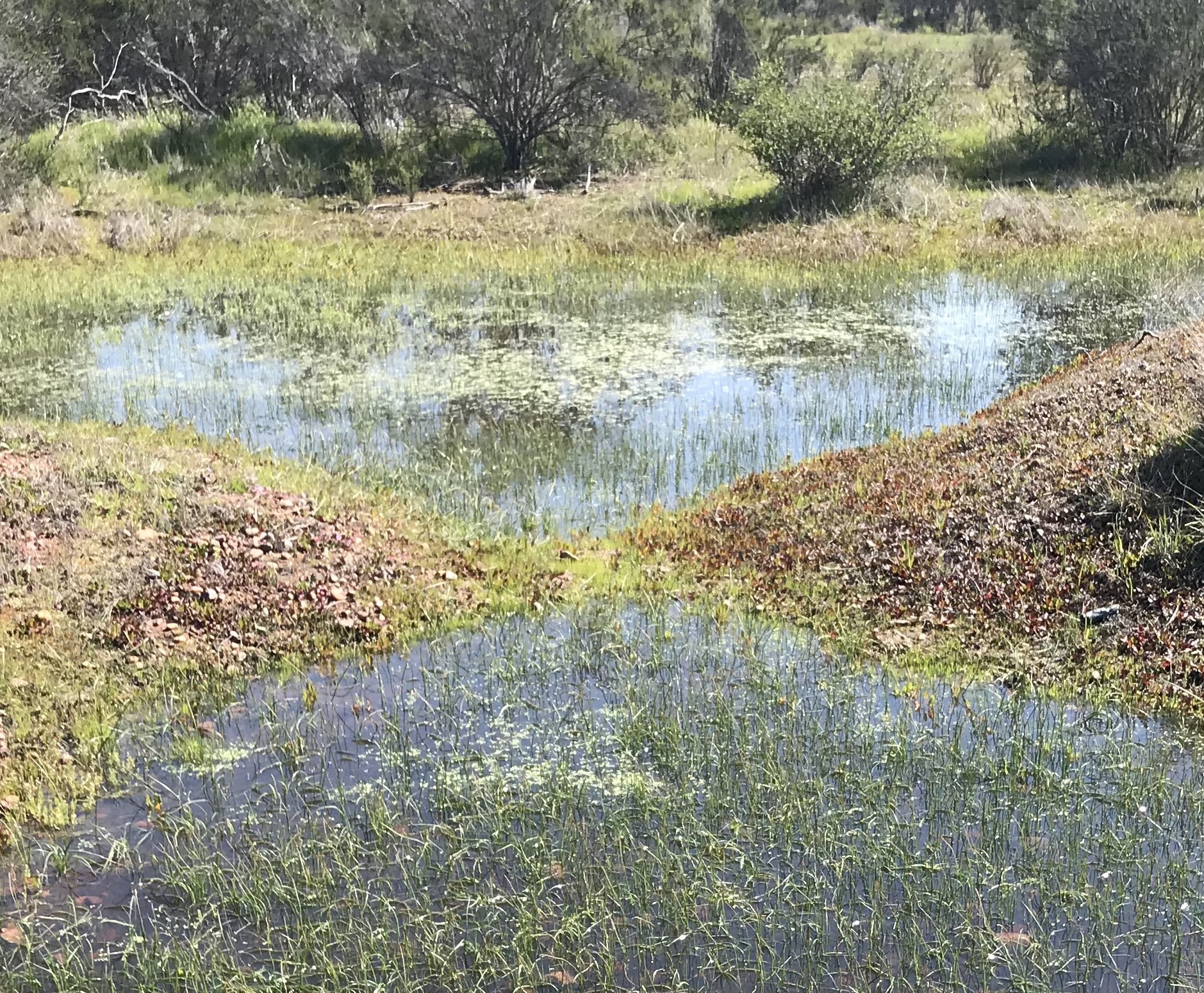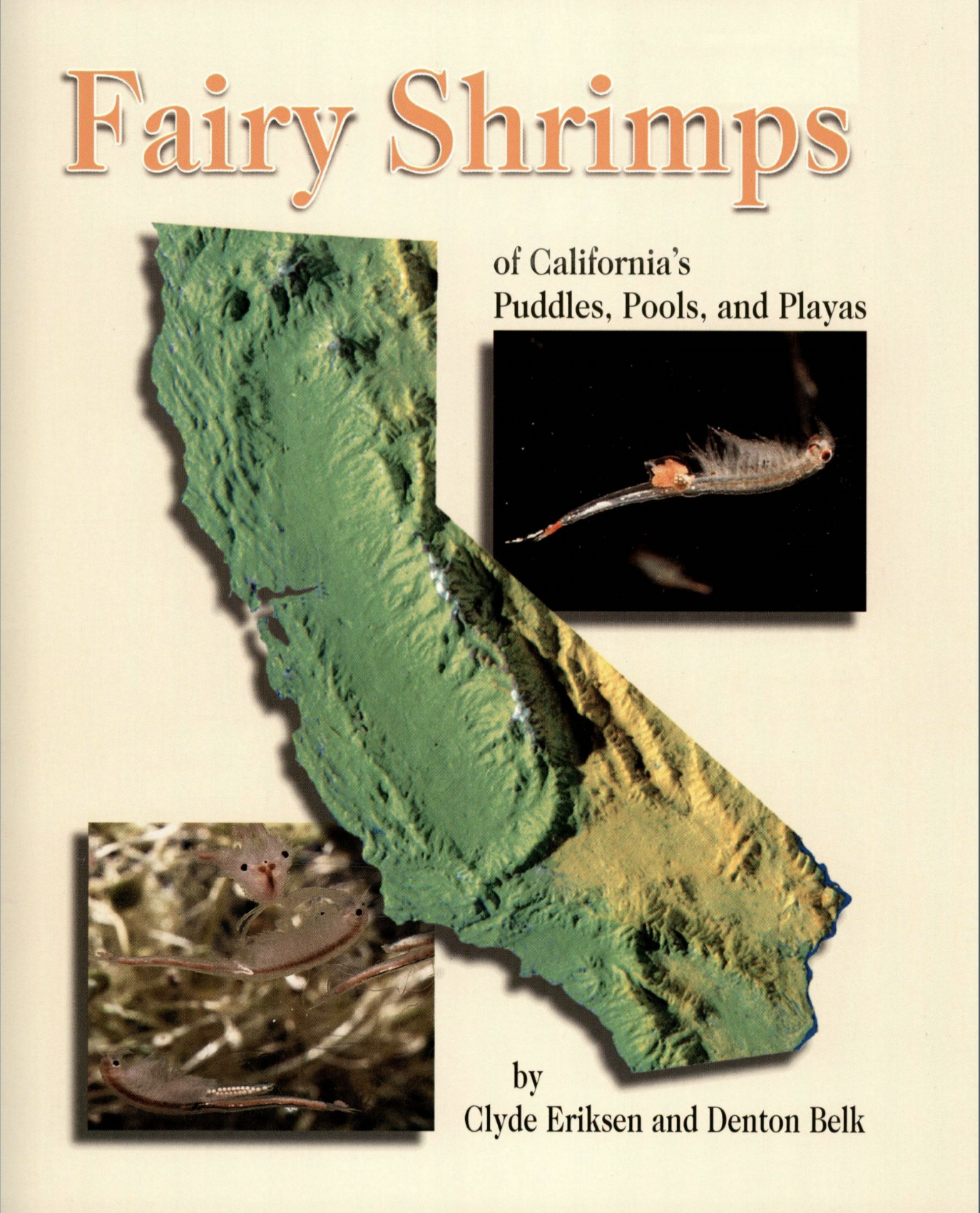ALL ABOUT CALIFORNIA FAIRY SHRIMP!
WHAT ARE FAIRY SHRIMP?
SEA MONKEYS! (Yea? Or...)
For sure! Fairy shrimp are small crustaceans that live in "vernal pools" (more on this later). They were cleverly branded as "sea monkeys" and sold at kids toy stores as a packet of eggs (cysts) and a little aquarium back in the 1980s and are still a hit today. While sea monkeys are most likely hybrids, many believe them to be of the genus Artemia.
Fairy shrimp are actually fascinating little critters, and vernal pools, in their pristine form, are exceptionally beautiful and unique habitats. California's vernal pools can be home to numerous endemic and endangered plant species as well as fairy shrimp and many other water-dwelling life.
According to the USFWS protocol, “Branchiopods are small crustaceans of the class (or subclass) Branchiopoda, having flattened, foot-like or paddle-like appendages that are used for locomotion, filter feeding, and respiration. Includes fairy shrimp, tadpole shrimp, and clam shrimp” (USFWS protocol)
BUT, ENDANGERED SEA MONKEYS?

In California there are at least 25 species of known fairy shrimp, of which six are endangered or threatened!
- Branchinecta conservatio; Conservancy fairy shrimp (endangered)
- Branchinecta longiantenna; Longhorn fairy shrimp (endangered)
- Branchinecta lynchi; Vernal pool fairy shrimp (threatened)
- Branchinecta sandiegonensis; San Diego fairy shrimp (endangered)
- Lepidurus packardi; Vernal pool tadpole shrimp (endangered)
- Streptocephalus woottoni; Riverside fairy shrimp (endangered)
One of the biggest questions is: are the fairy shrimp on my project or property endangered?
Why would anyone ask?
In California, if there is habitat for vernal pools or potential for endangered or threatened fairy shrimp, development projects can come to a halt. Whether it be putting in a new gas station, a pool in your backyard, or a new highway, environmental rules, regulations and permitting ensure that if potential habitat is found on site, then full surveys may need to be conducted to determine if there are indeed listed fairy shrimp present.
What do these surveys entail? How can one determine if such a little critter that lives in a little pool is present? Head over to our Protocol Survey page to learn more!
WHERE DO FAIRY SHRIMP LIVE?
VERNAL POOLS
Fairy shrimp simply live in places that we call "vernal pools", which are a form of seasonally inundated wetland. But it is, as always, a bit more complicated than that.
In a perfect world, a vernal pool is a beautiful place where the soil and hydrology are just right such that the area ponds in the winter, long enough to sustain life, such as for fairy shrimp and in many cases, frogs, dragonflies and other water-dwellers. These vernal pools are filled with endemic plants and many truly are stunning to behold, such as this Downingia here on the right (photo ©2016 John Doyen).
In the real world, things are more complex. Fairy shrimp can be found in just about any pond or puddle that holds water long enough - even dirty, muddy grimy ones! In fact, we have found endangered fairy shrimp in some of the dirtiest puddles near the border of San Diego and Mexico, where we would not even touch the water without gloves. But these little ones were found thriving! They also do not seem to mind disturbance, such as tires and cars driving through their habitat. While it may destroy the pool basin itself, the shrimp seem to be just fine.
To further refine the definition, vernal pools are special in that they have a clay lens layer, which prevents water from being absorbed into the ground quickly, allowing for ponding. But unlike a wetland, they do not support typical hydrophytic vegetation and do not have an inflow/outflow of water except during high rain events. Think a puddle where water

evaporates rather than drains or absorbs into the soil. According to the USFWS, vernal pools “are so named for their endemic floras (e.g., Downingia sp., Eryngium sp., Plagiobothrys sp., Psilocarphus ssp.) Vernal pools are typically classified by the local geology and usually have clay soils (cite: (Zedler 1987, CDFW 1998).) Vernal pools may occur singly, but more typically occur in vernal pool complexes, due to local hydrology, geology, and topography. In an intact vernal pool, the first few rains of the season wet the surface, sometimes ponding water for a few hours to days before percolating into the subsoil ” (USFWS protocol).
In California, vernal pools are unique and ecologically significant seasonal wetland habitats. They are temporary bodies of water that form during the rainy season and typically dry out during the summer months. Vernal pools are shallow depressions in the landscape that fill with water from rainfall and runoff, creating a distinct and specialized ecosystem.
Ecological Soil Labs provides expertise in mapping vernal pool boundaries and performing initial habitat assessments, identifying endemic and common flora and fauna, and performing both wet and dry season protocol-level surveys for endangered fairy shrimp (including special terms and conditions for soil processing, cyst hatching and cyst rearing) (LEARN MORE HERE)
WHY VERNAL POOLS MATTER
- Biodiversity Hotspots: Vernal pools support a high level of biodiversity and are home to numerous plant and animal species, many of which are specially adapted to these unique habitats. They provide critical breeding and foraging grounds for various species, including endemic and rare plant species, fairy shrimp, tadpole shrimp, and vernal pool crustaceans.
- Rare and Endangered Species: Vernal pools in California are known to harbor several rare and endangered species. For example, the federally threatened vernal pool fairy shrimp and the endangered California tiger salamander are dependent on these specialized habitats for their survival. Protecting vernal pools is crucial for the conservation of these vulnerable species.
- Plant Diversity: Vernal pools support a rich array of plant species, including native grasses, wildflowers, and small herbs. Many of these plants have adapted to the unique hydrological patterns and soil characteristics of vernal pools. Some vernal pool plant species have evolved to germinate, grow, flower, and set seed within the short window of time when the pools are filled with water.
- Ecosystem Services: Vernal pools contribute important ecosystem services. They act as natural sponges, temporarily storing rainwater, which helps recharge groundwater and prevent flooding downstream. Additionally, vernal pools provide filtration and purification of water, contributing to improved water quality.
- Cultural and Educational Value: Vernal pools hold cultural significance for indigenous communities in California. They are often associated with traditional practices, rituals, and medicinal plant use. Moreover, vernal pools serve as living classrooms, offering valuable opportunities for scientific research, ecological education, and appreciation of California’s natural heritage.

Due to their ecological importance and vulnerability to various threats, including habitat destruction, urban development, and invasive species, vernal pools are protected under state and federal regulations. Activities that may impact vernal pools or their associated species often require permits and mitigation measures to ensure their conservation.
Conserving and restoring vernal pools is essential to safeguarding the unique biodiversity they support and maintaining the ecological balance of California’s diverse landscapes. Ecological Soil Labs has years of experience surveying in and protecting these unique habitats, from vernal pool to mud puddle alike.
WHAT DO FAIRY SHRIMP LOOK LIKE?
According to USFWS, “Branchiopods are small crustaceans of the class (or subclass) Branchiopoda, having flattened, foot-like or paddle-like appendages that are used for locomotion, filter feeding, and respiration. Includes fairy shrimp, tadpole shrimp, and clam shrimp” (USFWS)
Fairy shrimp at first glance all look a bit like brine shrimp, or sea monkeys if you will, but the species are each so unique up close! To tell species apart, one can look at the tail, dorsal bumps in females, and appendages in males. Here is just a snapshot of the various characteristics from Fairy Shrimps of California's Puddles, Pools and Playas by Clyde Eriksen and Denton Belk, 1999:

HOW DO WE FIND FAIRY SHRIMP?
Fairy shrimp are found in vernal pools and "puddles", but how do we as humans actually find them?
Fairy shrimp swim and live their lives in water, and typically reside near the bottom of their habitat. While one might be able to observe fairy shrimp from the edge of a vernal pool or puddle, it is important to recognize the sensitivity of these habitats, and to please never go tromping around to get a better look. When wet, your footsteps can greatly damage the pool, including the clay lens that keeps water from draining away (and allows the shrimp to live out their lives and reproduce before the water is gone).
It is further important to recognize that if endangered or threatened ("listed") fairy shrimp are present in the pool, puddle or habitat, damage to their habitat or capture of the species is considered "take" and is illegal, and fines can be steep!
In fact, only those individuals with a USFWS Scientific Recovery Permit 10(a)1(A) for fairy shrimp are even allowed to capture or disturb listed fairy shrimp. Further, even those with a permit have to get permission from USFWS before they are allowed to survey or sample the pool.
To learn more about this process, known as "protocol-level presence/absence surveys", please click here.
MORE ABOUT CALIFORNIA FAIRY SHRIMP
There is so much more to learn!
On this page is a full list of species found in California, with links to photos.
We also highly recommend the book "Fairy Shrimps of California's Puddles, Pools and Playas" by Clyde Eriksen and Denton Belk, 1999.

